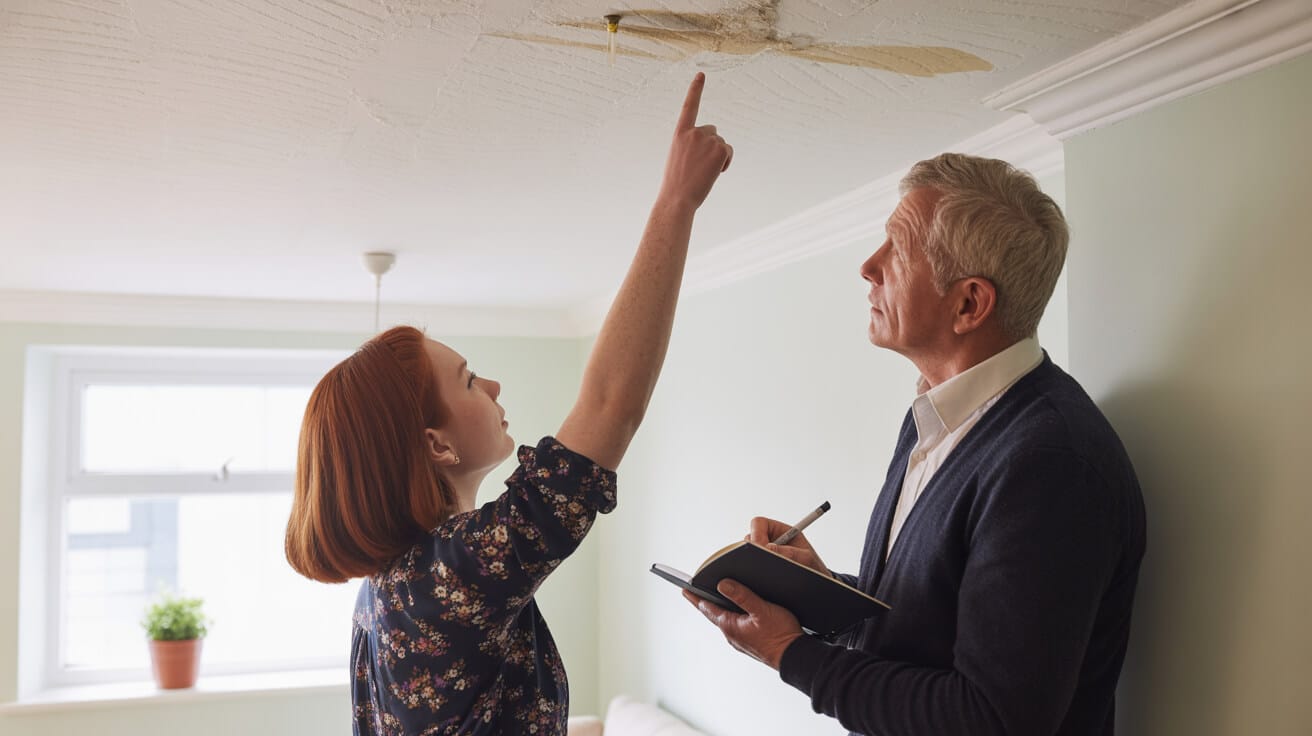 The Top 10 Plumbing Emergencies in London (and How to Avoid Them)
The Top 10 Plumbing Emergencies in London (and How to Avoid Them)
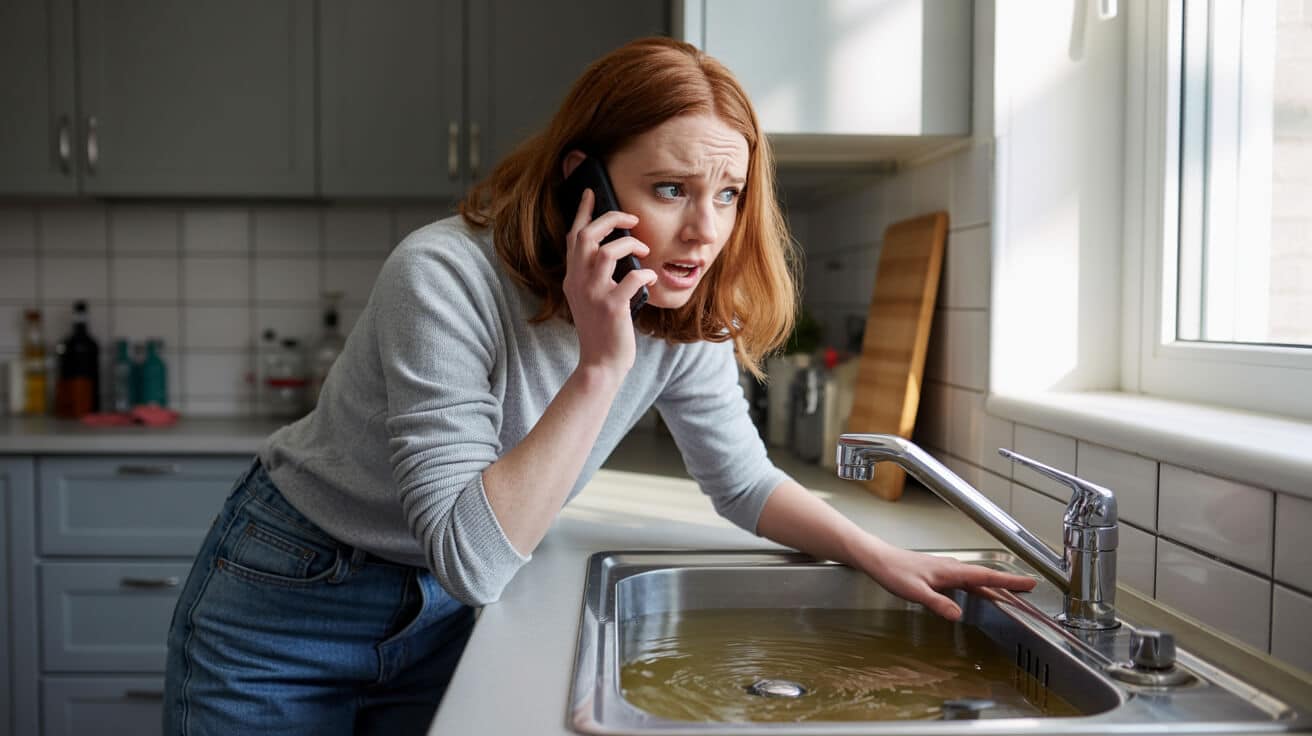
Which Plumbing Emergencies Hurt London Properties Far Beyond the Repair Bill?
Imagine stepping into a London flat or managing a block and hearing water behind the wall, or finding a toilet flooding just as tenants expect normality. The real emergency isn’t just the visible water or a whiff from a blocked stack—it’s what goes unsaid: lost asset value, shaken trust with tenants, intense compliance pressure, and the hard truth that every mishap leaves a permanent mark on your property record. In today’s London, where every repair is scrutinised by insurers and every slip is monitored by local authorities, the hidden cost of a plumbing emergency can spiral well past the invoice.
Every leak, every blockage, every delayed call-out puts more than your property at risk—it quietly erodes your reputation and future earnings.
Unlike a fleeting technical fault, a plumbing crisis is a fork in the road. Respond efficiently—with full documentation and regulated aftercare—and you preserve both equity and trust. Hesitate, patch over with a quick DIY or miss a photograph, and you risk denied insurance, legal hassle, or even council scrutiny. Regulatory changes like the Renters Reform Bill and tougher Housing Health and Safety Rating System now demand that every property owner and agent is not just reactive, but defensible—a burst pipe is now a legal as much as a technical drama.
London properties are built atop generations of improvisation and repair. Old soldered copper sits beside modern push-fits; one sagging joint, a mystery stopcock, or a missing compliance certificate, and yesterday’s problem becomes tomorrow’s council demand or an insurance headache. Homeowners, agents, and local authorities can no longer afford a “fix it and forget it” attitude—proof, processes, and professionalism are the currency of modern asset protection.
What Plumbing Emergencies Escalate Fastest and Why Are They So Often Overlooked?
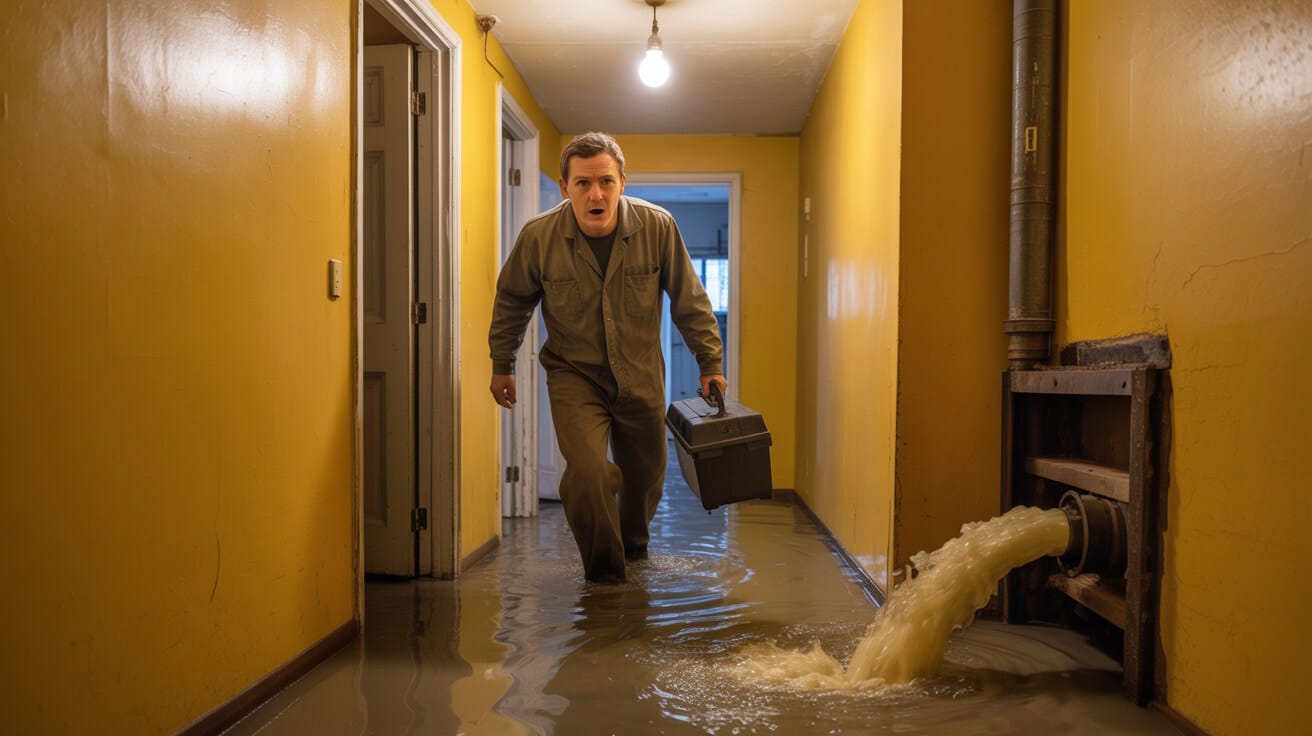
Every property owner dreads the burst pipe, but persistent leaks and undetected pressure drops are often more devastating—and they rarely deliver any warning that grabs your attention. Londoners working with legacy copper, erratic plastic upgrades, and the city’s trademark shared pipework face emergencies that can escalate from a small patch of damp to a full ceiling collapse before the first call for help goes out.
A hidden leak doesn’t just damage ceilings—it shreds your chance of a smooth insurance claim if you can’t prove when and how you acted.
Many homeowners fail to locate or even test their main isolation valve. Others—especially leaseholders or managers—have no idea where their responsibility truly starts or ends. Who owns the riser? Can you access a central shut-off? Insurers and letting agents now expect timestamped images, engineer invoices, and credentials to process even basic claims. Delayed action or amateur quick fixes void warranties and leave property owners footing exorbitant repair and reinstatement costs.
Here’s what to map out and enforce—no shortcuts:
- Pinpoint all isolation valves: and ensure every resident, manager, or responsible agent can use them. Insist on a written summary or diagram from your last plumbing service.
- Document every damp patch, puddle, or pressure change: with a photo, clock, and a description—start your evidence trail before you even call for help.
- Never energise electrics or attempt pressurisation: in incident areas. Insurance providers increasingly penalise self-inflicted escalation or lack of proper isolation and drying, especially where electrics or ceiling damage are involved.
Professional repairs must include not only visible fixes but recorded testing, aftercare instructions, and, where applicable, anti-mould or flushing procedures—any missing paperwork now severely weakens your compliance standing. According to UK industry claims data, over one-third of water escape claims in the capital are rejected due to “insufficient evidence of mitigation” or unrecorded remedial work. Proactive, systematic records are your shield.
Why Blocked Drains or Toilets Multiply Risk and Compound Fines—Fast

You might view a blocked drain or toilet as an unpleasant, urgent mess. In a London multi-tenant property or commercial space, it’s outright hazard territory—a compliance emergency with real reputational risk. Thanks to ageing waste stacks, crowded soil pipes, and the unpredictable cocktail of domestic and commercial fixtures, a blockage can devolve into contamination, council intervention, or even legal action within a matter of hours.
There are no minor blockages if you manage a property—every one can generate claims, enforcement, and weeks of lost goodwill.
Repeated slow drains, gurgles, and recurring blockages are systemic warnings—not isolated headaches. Quick fixes with plungers, over-the-counter chemicals, or unqualified “clear-out” services often only push risk further down the line, risking backflow or pump/macerator failure. In shared dwellings or commercial premises, a lack of professional assessment means every repeat event tightens the regulatory vice.
To stay ahead of the risk curve:
- Track and log recurring symptoms: (slow drains, bad smells, weak flushes) and link them to previous interventions. Absent a professional’s root cause analysis, every insurance and council query gets tougher.
- Never attempt amateur rod or chemical clears: on macerators or stacked, pumped systems—only certificate-holding engineers can provide the logs and photographs now expected by insurers and local authorities for clear sign-off.
- Demand written reports and before/after photos: for every unblocking or remediation—a “done and dusted” slip won’t satisfy a compliance audit.
The moral: fast action, executed and documented by WRAS-certified professionals, saves you from repeat incidents and lost regulatory standing. Treat “just a blocked loo” as the opportunity to prove diligence, and you’ll avoid spiralling costs and enforcement headaches.
When Water Stops Flowing, Where Does Shared Responsibility—and Risk—Really Start?
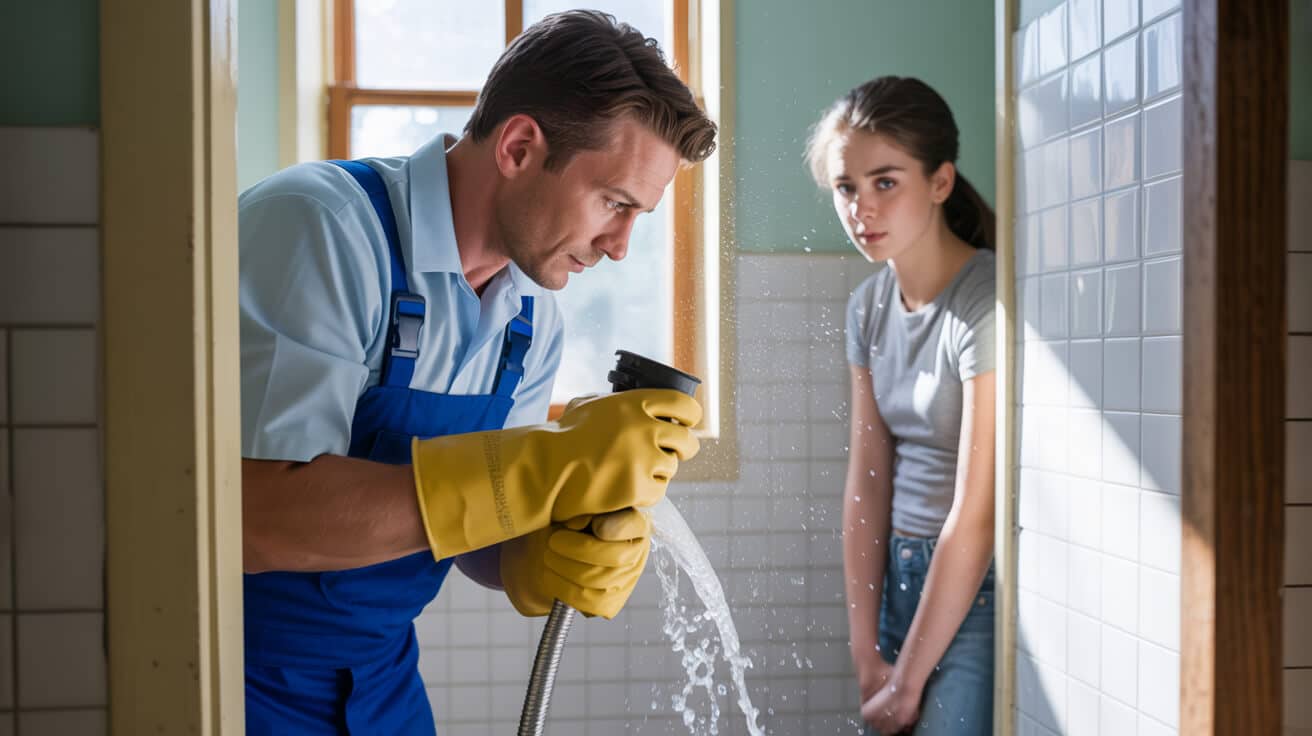
A sudden loss of water supply seems like a utility’s fault. Yet in London’s flats and subdivided properties, the underlying cause is often internal: a stuck valve, a frozen run above a soffit, or an accidental knock-out further up a riser can trigger a domino effect of cascading risks, especially if you respond by simply “restoring pressure” on the spot.
The urge to force water back on is exactly what deepens long-term risk—trace, test, document before you touch.
In practice, it’s easy to trigger more extensive mechanical failures, liability confusion, or extensive leaks if you “fix first and ask questions later.” Property managers and landlords face particular pitfalls with unclear boundaries for maintenance—fail to document internal fixes or clarify span of responsibility, and you may inherit the costs of both the incident and any secondary fallout.
The modern fault path:
- Immediately determine the scale of the outage: talk to neighbours, check landlord/building manager notices, and ascertain if the issue is wider than your unit.
- Don’t restore supply without full diagnostics: engineers can spot frozen runs, faulty tank fills, or stuck valves that otherwise go overlooked but cause major recurrences.
- Maintain a clear, updated map of supply lines and isolation zones: council and insurance demands for “responsible person” clarity are only getting tougher.
Certification by qualified, WaterSafe engineers is your best shield—these documents not only shorten claim response but define your legal boundary and document the right division of responsibility, especially as joint-maintained or communal systems become more prevalent.
Heating and Boiler Breakdowns: Why Their Costs Are Legal, Not Just Technical
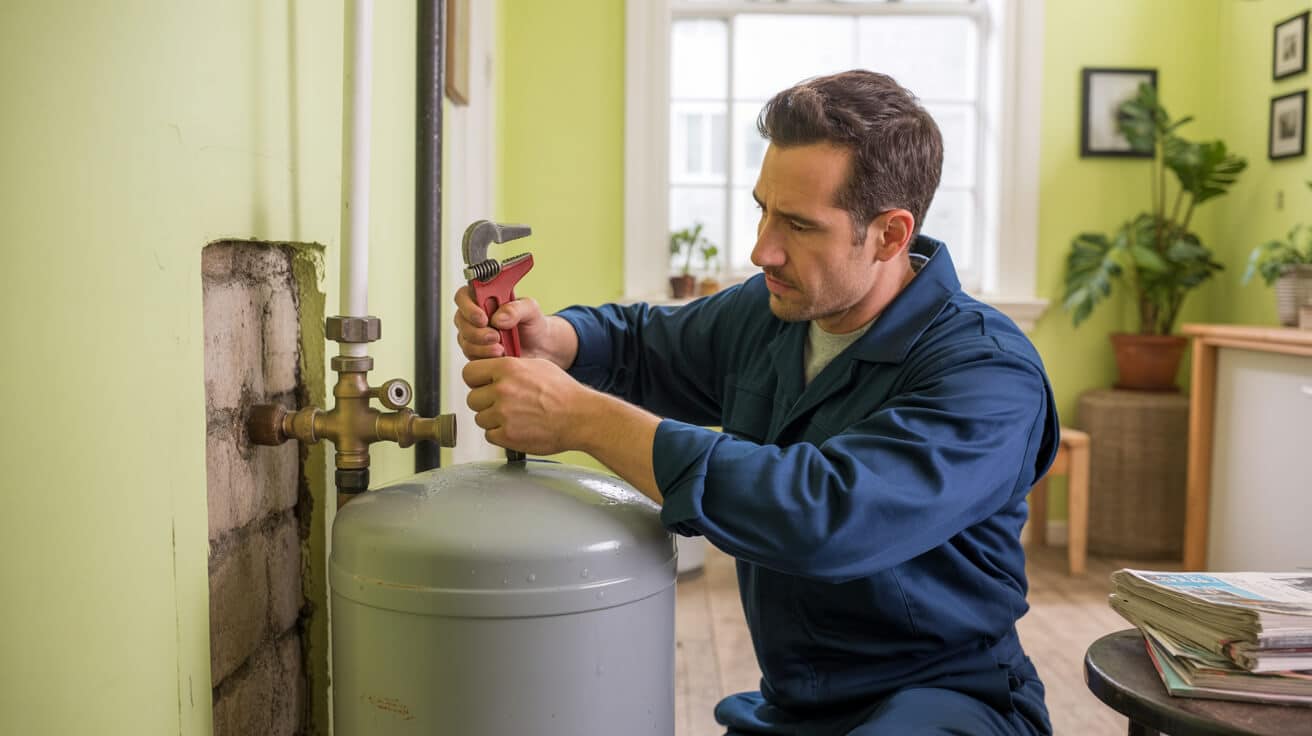
In the current London climate, a failed boiler isn’t a cold weekend or a minor call-out. It’s a formal event—one with compliance deadlines, tangible risks in tenancy agreements, and legal repercussions if response times or documentation fall short. Thanks to expanded tenant protections (Renters Reform Bill), missed heat or hot water isn’t a minor lapse, it’s a landlord or agent’s legal vulnerability.
How you handle a breakdown is what agents, tenants, and authorities will remember—not how quickly you get the water running again.
A hasty reset, a non-certified repair, or even missing benchmark (boiler) or G3 (unvented) paperwork now risks everything from withheld rent to regulatory fines or insurance refusals. Homeowners and portfolio managers who keep a meticulous service log and only trust GasSafe/WRAS-qualified hands prevent a technical headache from turning into a multi-party conflict.
Absolute essentials:
- Keep documented servicing and repair logs: , and demand a Benchmark or G3-completed book with every visit. Insurers and local authorities increasingly require these for sign-off.
- Never undertake unqualified fixes or resets: —modern digital fault diagnoses register your activity, affecting both warranty and insurer claims.
- Demand photo logs and service credential proof: from every visit—every compliance audit now expects digital evidence on file.
The routine you embed today is the foundation of tomorrow’s resilience, legal confidence, and stakeholder trust.
Why Are Toilet/Macerator Overflows and Backflows a Property’s Worst-Case Scenario?
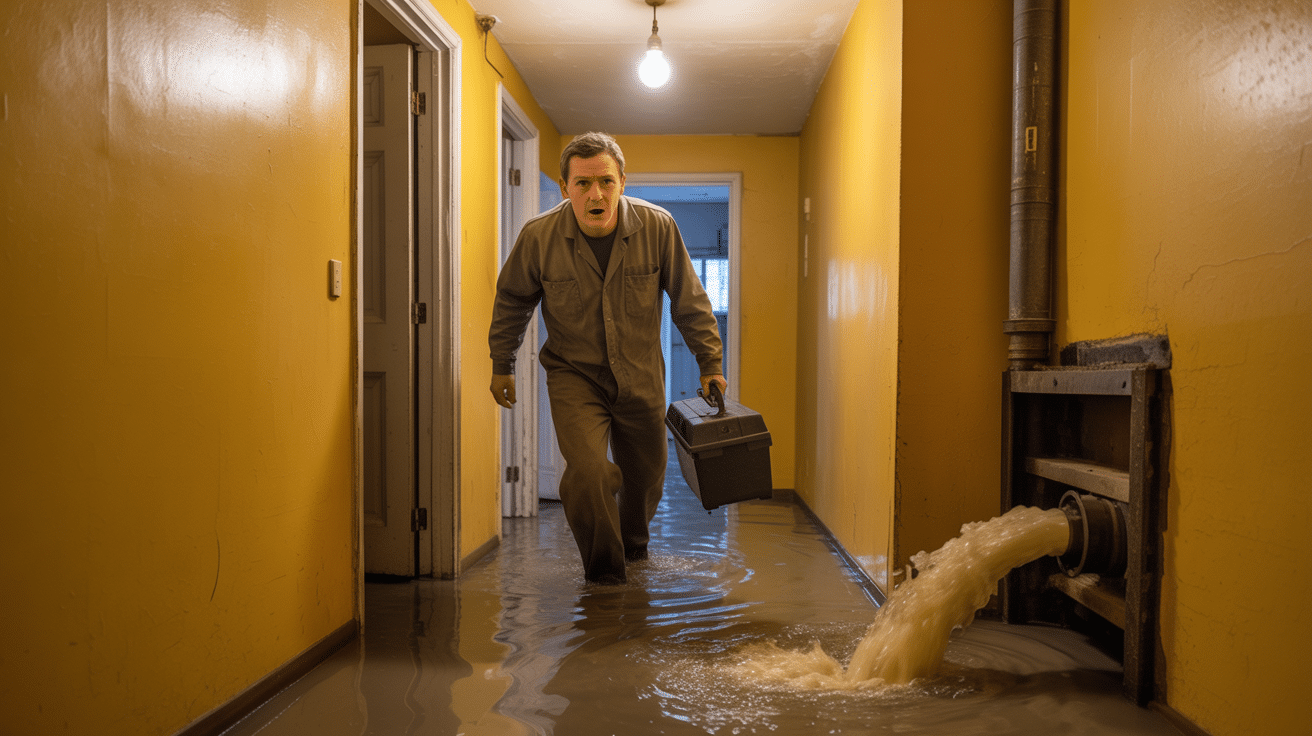
The image of a blocked or Overflowing Toilet may feel like a primal inconvenience, but in high-density or commercial properties it can quite literally become an environmental disaster on your watch. When waste breaches into living space, council scrutiny, environmental health enforcement, and legal claims on landlords and property managers can follow with astonishing speed.
An incident without documentation isn’t closed—it’s an ongoing liability, resurfacing in audits or compensation demands months later.
London properties with shared stacks, multiple tenants, or commercial footfall must treat every backflow as a crisis that demands compliance and hygiene validation. Insurance and council inspectors are increasingly insistent: proof of certified remediation, not just cleanup, is the absolute minimum.
What your playbook demands:
- Isolate the system quickly: cut supply at the fixture and, if needed, at the macerator spur. Photograph all contaminated areas before and after.
- Alert all users and restrict access immediately: the more people share a system, the broader your documentation must be.
- Instruct or commission only WRAS- or Hygiene-certified engineers: anything less invites future liability.
This is not a space for shortcuts—council protocols and tenant expectations require mechanical and environmental sign-off. Going cheap now always leads to bigger bills later.
Noisy Pipes and “Water Hammer”: Why Ignoring Small Signs Creates Big Failures
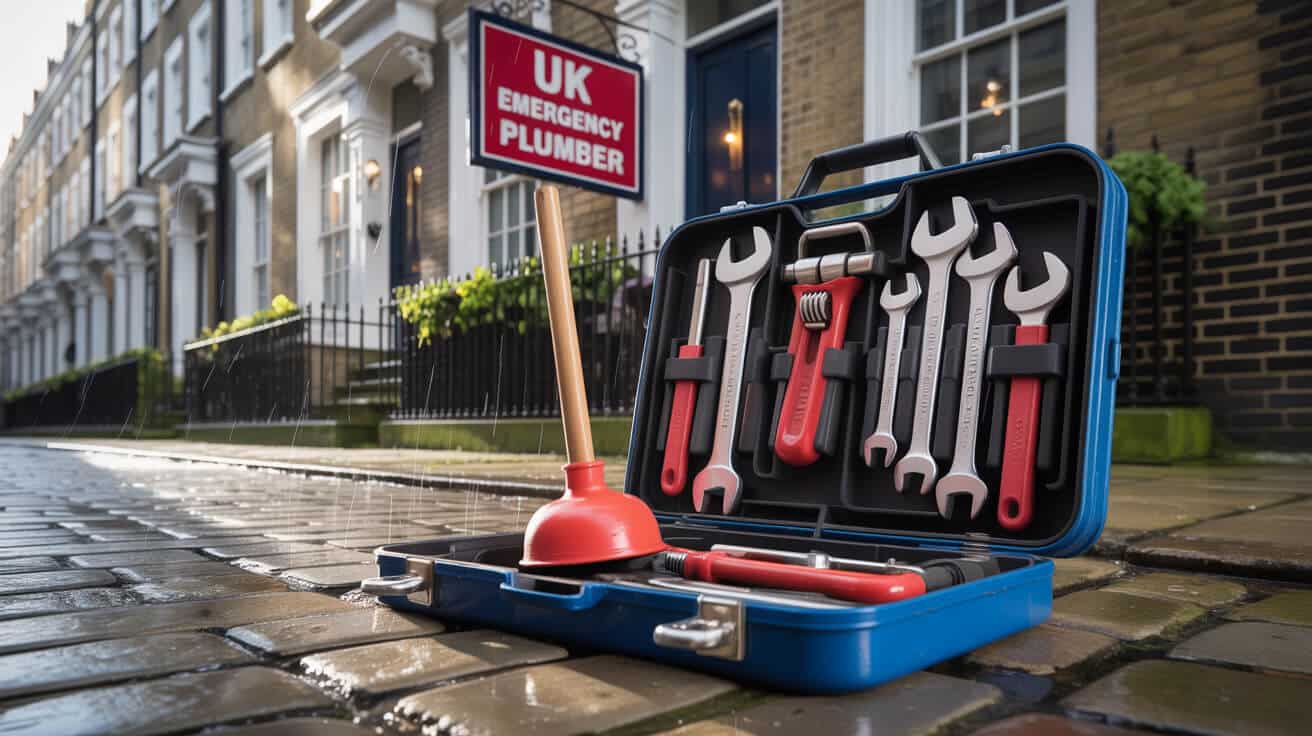
In London’s hybrid building stock, the brief clatter of pipes after a tap shuts off, or a mysterious humming at odd hours, foreshadows more than annoyance—it’s the leading indicator of pressure problems that often end in catastrophic losses. Untreated water hammer, pipe vibration, or system knocks almost always precede flexible hose ruptures or major leaks, usually during out-of-hours periods for maximum disruption.
Small sounds left unchecked become the most expensive failures—ignored warnings are property managers’ biggest risk.
You must act like a system diagnostician:
- Map and record all noise incidents, including time, fixture, and any recent work.: This becomes invaluable evidence later.
- Pause use and schedule a support/pressure check: professional plumbers can trace issues to loose fixings, improper pipe runs, or pressure spikes—problems that “arrestor” gadgets merely conceal rather than solve.
- Proactively commission WRAS-accredited reviews,: especially after any upgrade or pre-letting.
Industry figures show that over half of plumbing-related insurance claims during London winters arise from equipment undiagnosed despite prior noise warnings. Regular, documented investigations transfer the risk from your shoulders to the professionals—every owner’s or agent’s ultimate goal.
Why Stopcock and Isolation Valve Failure Is the Ultimate Emergency Multiplier
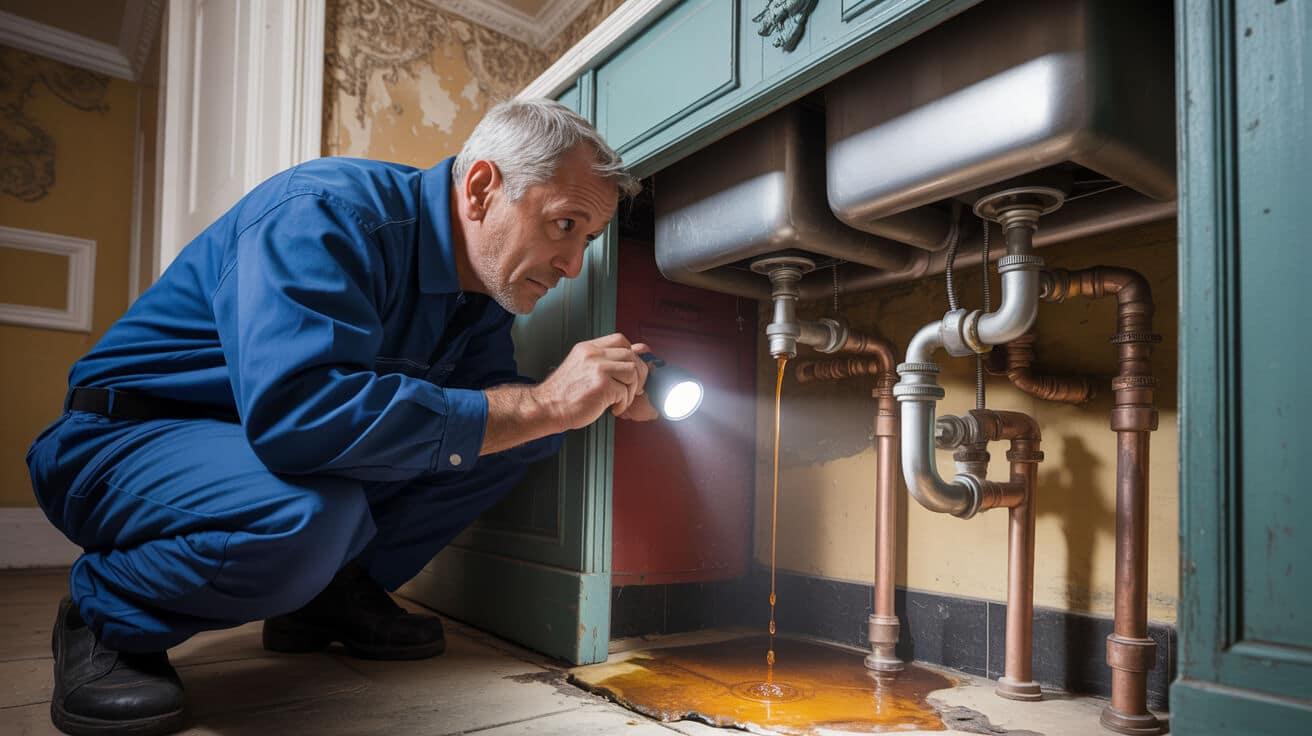
Nothing derails effective emergency response more decisively—or causes costlier secondary damage—than an inaccessible or failed isolation valve. Valve neglect is widespread, especially in older or communal stock, but its impact is severe: it can single-handedly leave you unable to limit loss, insurance claims, or health risk in a real crisis.
A £20 valve left untested can turn a manageable leak into a £50,000 uninsured disaster in minutes.
Property managers and homeowners must build a culture of proactive isolation:
- Inventory and test every stopcock/valve at least twice yearly, with a log and photographic backup.:
- Replace suspect, stuck or corroded valves without delay—only use WRAS-approved hardware, and demand installation records.:
- Schedule scheduled checks with the same urgency you apply to smoke alarms or fire exits; for agents and landlords, pattern this into every major work-cycle.:
Insurers are increasingly refusing claims if loss is aggravated by unclear or unproven isolation. For resilient, repeatable emergency protection, make valve health as routine as regular rent checks or EPC reviews.
What Separates an Emergency Plumber Who Protects Your Reputation from One Who Just Plugs Holes?
In a city thick with certifications, codes, and legal scrutiny, who you trust in an emergency sets the tone for your entire asset strategy. What property leaders, agents, and discerning owners demand now isn’t merely a fast fix—but a straight line of evidence, compliance, and aftercare that stands up to insurers, tenants, and councils alike.
The right repair isn’t just about pipes—it’s about putting proof on your side, every single time.
Plumbers 4U delivers:
- Every emergency call triggers a systemised triage—your risk is correctly classified, isolation started, and every step digitally documented.
- Every job concludes not only with a fix, but with a regulatory log, part codes, serialed photos, and before/after testing straight to your asset file—for both domestic and commercial clients.
- Only engineers with WRAS, G3, and GasSafe credentials attend—guaranteeing council and insurance comfort if an incident is ever reviewed.
- Aftercare means test-walks at handover, and guidance for tenants or facilities teams—so you’re covered even after we leave.
In modern London, the difference between smooth asset stewardship and recurring crisis isn’t luck, but process, compliance, and a partner who matches your standards.
Secure Your London Property—Emergency-Proof Service Begins with Plumbers 4U
When a pipeline bursts, a boiler fails, or a drain overflows, your real asset isn’t just the plumbing—it’s your readiness, your evidence, and your reputation for diligence. Plumbers 4U’s citywide, fully certified teams provide more than fixes: every job, whether in a historic Knightsbridge townhouse or a busy Walthamstow commercial shop, includes digital before-and-after documentation to futureproof your record.
Don’t wait for a disaster to start thinking like an asset manager—the best defence is a documented, compliant offence.
Safeguard your investment:
- *Book a Plumbers 4U visit or subscribe for planned maintenance today.*
- *Ensure every fix sits on a foundation of compliance, proof, and up-to-date advice.*
- *Prevention is always more affordable—and less stressful—than scrambling for a solution when systems fail.*
Protect your property, your reputation, and your peace of mind with Plumbers 4U—where process, evidence, and experience are part of every call.
Frequently Asked Questions
Which properties in London are most exposed to urgent plumbing emergencies, and what are the subtle first signs?
Some London properties are practically magnets for plumbing surprises—especially those with a mix of old systems and rushed renovations. If your building blends vintage pipes, converted lofts, or communal riser stacks, you’re sitting on a time bomb for hidden leaks or heating breakdowns. But property risk isn’t just about age; it’s about complexity and oversight. Even gleaming developments may hide orphaned ball valves, unlabelled isolation points, or legacy copper joined to plastic. The first signs are easy to brush off: paint rippling after a storm, an odd tap rattle, or a recurring musty tang when the heating cycles at night. These hints might not shout “emergency,” but they whisper about buried faults in pipes, joints, or even under the floor. According to WaterSafe, unnoticed pressure dips or audible “water hammer” can mean a joint or seal quietly eroding, ready to blow when stress spikes.
How do you catch silent plumbing problems before drama breaks out?
- Damp or stained patches on ceilings or behind radiators—especially after cold snaps or heavy rain
- Gurgling sinks or toilets, particularly in upper floors or conversions with shared vertical stacks
- Musty or sewage odours drifting in and out, signalling slow hidden leaks or incomplete traps
- Walls that feel unusually chilly where pipes run, hinting at micro-leaks undermining insulation
- Sudden pressure drops when multiple outlets are used, pointing to overall system weakness
That tiny patch of bubbling paint or odd pipe rattle is usually years in the making, not a one-off annoyance.
London’s mashed-up property stock means being able to spot these signals is a superpower. Logging symptoms, snapping photos, and flagging issues for your manager or maintenance team can mean the difference between an ace ‘pre-emptive’ fix and a five-figure insurance headache. Proactive habits are what set high-performing landlords and owners apart—and are why professional teams like Plumbers 4U build asset maps and maintenance checklists for every job.
How should you respond the moment a plumbing emergency breaks out in a London property?
You’ve spotted water where it doesn’t belong, or realised the boiler pressure’s crashed—now what? Response speed is everything. The moment you spot a leak, uncontrolled water, or a sudden system failure, your priority is to locate the main stopcock (often lurking under the kitchen sink, in riser cupboards, or in ground-floor metre boxes) and turn it off completely. This single move can slash repair costs and risks by stopping further flow—especially crucial for basement flats, period conversions, and anywhere wiring or plasterboard is at risk.
Once the water’s off:
- Open the lowest cold taps in the building to drain remaining pressure safely (protecting pipes from splits or backflow)
- If water is near sockets or the consumer unit, shut off the relevant circuit or, if safe and confident, the main power
- Snap timestamped images of damage, pooling water, or affected valuables for insurance and manager records
- Loop in your landlord, site manager, or block managing agent immediately so nobody’s in the dark about your next moves
Every minute you wait lets water—and blame—find more places to hide. Make isolation drills second nature.
If your stopcock won’t budge or you can’t access it, don’t gamble—call a WRAS- or WaterSafe-registered plumber who can guide you and legally isolate at the street if needed. Managers and landlords: make sure every occupant knows this drill before winter hits, and document practice shutoffs as both insurance proof and legal best practice. Teams like Plumbers 4U not only handle the fix but provide full documentation after every emergency, so you’re not left arguing for claims or compliance when the dust settles.
Which plumbing emergencies in London legally require certified engineers, and how does this directly protect your insurance claims?
Not every crisis is DIY-friendly. As London’s standards have tightened, emergencies involving mains water pipes, unvented hot water cylinders, gas boilers, or communal waste stacks must be handled by properly certified engineers. This isn’t box-ticking—Water Fittings Regulations and Gas Safety standards make it illegal for non-accredited trades or site staff to attempt key repairs. If your insurance adjuster or council inspector finds work done without a valid WRAS, WaterSafe, G3, or GasSafe registration, claims can be voided and liability bounces back to you or your company.
What are common scenarios demanding certified professionals?
- Repair or replacement of direct water mains supply, especially after contamination or bursts
- Any fixes to high-pressure or unvented cylinders (look for “G3” sign-off)
- Gas boiler resets, leaks, or full installations—require GasSafe as non-negotiable
- Troubleshooting waste stacks, risers or any system feeding multiple units, especially in blocks or HMOs
- Any repairs impacting public health, business operation, or involving cross-connection with other services
For insurance, compliance, and peace of mind, certified repairs aren’t a formality—they’re your only defence against denied claims and legal heat.
Insist on digital job logs with registration details, before/after photos, and issue-specific certificates every time. Plumbers 4U supplies this paperwork as routine—protecting you from the fallout of dubious “repairs” and guaranteeing audit-ready evidence for every intervention.
What are the most effective strategies to prevent burst pipes or leaks in London properties—especially before winter?
Preventative plumbing isn’t magic—it’s thorough, actionable habits and modern detection. The best-managed buildings take three steps: insulate every exposed pipe (think attic, outside wall, or underfloor runs), maintain a minimum ambient temperature (set heating not to fall below 13 °C on the coldest nights), and schedule a professional system review before frosts arrive. Annual compliance checks by WRAS or WaterSafe-accredited teams catch problems you can’t see—like joint fatigue, silent leaks, or isolation valves that seize up just when the pressure drops.
What’s proven to work for both homes and commercial sites?
- Wireless leak detectors or “water alarms” near sumps, risers, or under kitchen units—these systems have slashed avoidable claims by nearly 40% in monitored properties, according to UK insurance figures
- Pre-emptive changes of flexi-hoses and old washers; the replacement cost is trivial versus a flooded kitchen or ruined parquet
- Encouraging all staff or tenants to flag any odd smells, sounds, or marks—turners who “report a quirk” as a positive, not a hassle
- Keeping a logged asset map with dates of last valve tests and fixture updates—critical for multi-occupancy, and now required by many insurers and compliance auditors
A single hour of insulation and a once-a-year valve test could save you weeks of chaos—and a massive hole in your operating budget.
For landlords and asset managers, bundle an annual compliance pack with digital logs, so you’re audit-proof and claim-protected. Plumbers 4U’s compliance teams specialise in this, delivering not just the “tick” but future-proof documentation and advice.
Why do minor symptoms like pipe knocks or damp odours in London buildings often signal impending breakdowns?
Ever heard a pipe bang after shutting a tap—or noticed a faint musty smell around a radiator? It’s not background noise or “old building character.” Technical studies and insurer loss audits from the last decade confirm these symptoms precede major leaks or failures more often than not. Water hammer (the bang or shudder after a valve closes), especially in properties with mixed pipe materials or long, unsupported runs, means every thud is stressing joints until something gives. The same goes for “cold” radiators or new gurgling as stacks age—they’re warning flares for compounding internal strain and escalation risk.
What’s the right way to address these early symptoms?
- Track and time every recurring sound or symptom—detail the location, timing, and frequency
- Book a qualified engineer (WRAS, WaterSafe, or G3) to check for loose pipework, excess pressure, and to fit anti-hammer solutions only once the root cause is isolated
- Ask for a written service report, noting system pressure, findings, and fixes—patchwork is never enough if documentation is lacking
- Photograph every repair or engineer note, filing by location and asset—not just for your files, but to bolster future claims or handovers
- For ongoing or ambiguous issues, commission a full system survey—especially ahead of winter or post-renovation
What starts as a one-off clang or faint smell is often your last warning. Owners who act fast become the landlords others envy in January.
High-performing managers and proactive homeowners document, correct, and verify every “little thing.” When paired with compliance-focused teams like Plumbers 4U, you end up with not just a robust system—but the paper trail to keep it that way.
Which documentation, guarantees, and aftercare should London property owners demand after emergency plumbing or heating work?
A quick fix isn’t the end. Without complete aftercare, you risk facing the same problem—or worse—down the line. After every urgent repair, insist on a clear digital or paper report outlining the issue, the remedial action and exact parts used (including photos), plus a compliance certificate (WRAS, GasSafe, G3, etc.) matching the intervention. Make sure you get a guarantee on both parts and labour—Plumbers 4U, for instance, covers all repair work and components for at least 12 months, with clear expiry terms.
What protects your assets and claim rights after the fact?
- A digital incident log with photographs (before/after), certificate numbers, and details of the registered engineer
- Explicit guarantees: not just a vague “satisfaction promise,” but documented parts/workmanship cover with clear duration and conditions
- Moisture and residue remediation instructions, plus tools for anti-mould or drying processes if water damage was significant
- A regularly updated asset and repair log, shared across managers, agents, and (with consent) tenants to avoid bottlenecks
- For multiple-unit or high-value buildings, backup digital copies for every compliance and service visit
Paperwork is the shield that turns one disaster into a lesson—not a repeating trap. Smart ownership tracks, proves, and protects.
Select only firms that deliver a compliance and care pack every time—Plumbers 4U closes every job with digital documentation, checklists, and update logs to safeguard your assets and streamline any future claim or transfer.
Book your scheduled audit, winter-prep assessment, or rapid response call-out today—and experience the advantage of systems, paperwork, and guarantees that truly protect your property, your business, and your reputation. London’s plumbing emergencies may be inevitable, but your losses never have to be.

